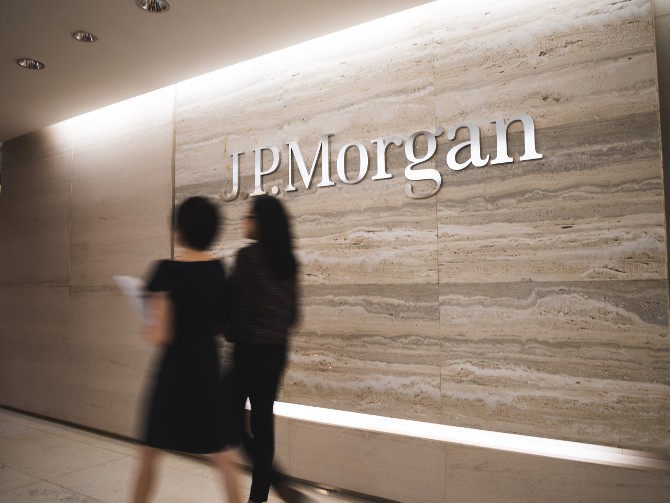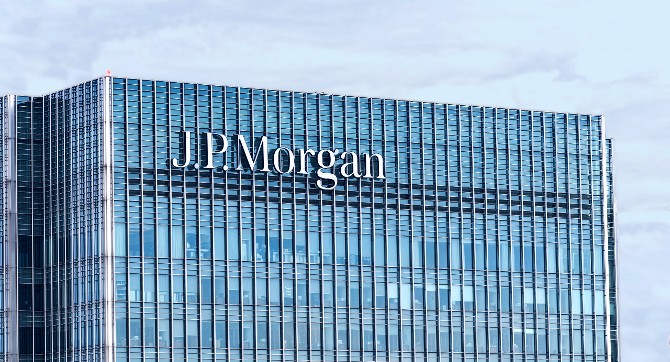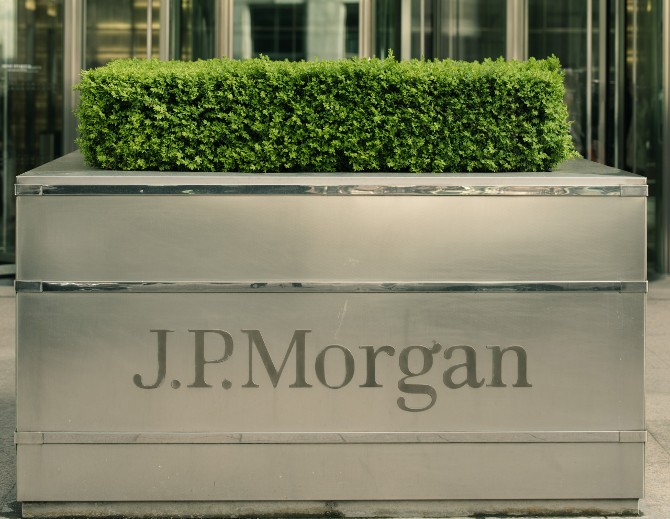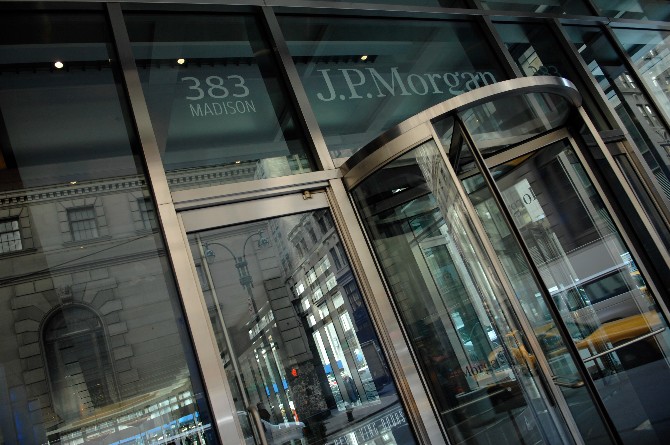We complete our series of conversations with IROs at Fortune’s World’s Most Admired Companies on managing financial reputation during the remarkable economic and market events of the past few years.
The pandemic onset proved to be just the beginning. Consumer confidence and spending understandably plunged. A rise in inflation to 40-year highs necessitated aggressive interest rates hikes. And the market, of course, declined into bear territory.
The annual Fortune ranking is the most comprehensive survey of public perceptions on companies with revenues greater than $10 bn in more than 50 industries across regions. The IROs represent companies that also rate highly for the financial measures surveyed – specifically, long-term investment value, use of company assets and financial soundness.
Here we speak with Mikael Grubb, head of investor relations for JPMorgan Chase, in the final instalment in our series, following earlier conversations with Julie Stewart, vice president of investor relations at Delta Air Lines, and Jessica Moore, vice president of investor relations for Johnson & Johnson.
To begin, can you give us a brief rundown on your career to date in the financial sector?
I began my career as an analyst at Handelsbanken in Stockholm and, after a brief stint in London, I moved to the US to join the financial institutions group at one of the large, global banks. The year was 2008 – the front edge of the global financial crisis – which was both a terrible and an awesome time to be in investment banking. As a young person just to be around conversations and decisions with such momentous implications for the financial system was pretty mind blowing. The deals were coming in one after another.

Fast forward a few years after the crisis had passed and I was approached by a mentor to join the IR department, which needed somebody with my abilities and background to round out the team. And I rather enjoyed the pace and challenge of it. A few years after that, I had the opportunity to join JPMorgan.
Take us back to the moment you realized we were once again plunging into uncertainty.
As it happens, our investor day in early 2020 coincided with the initial market-wide drop on pandemic fears. Literally the night before we had debated whether to insert a mention of the outbreak among risk factors for certain forecasts. And then in two trading sessions the S&P 500 sank more than 7 percent. Later in the week I went to an investor conference and the dropout rate was probably north of 80 percent so the footing changed dramatically in a matter of days.
I have to say, I felt glad to be at JPMorgan. The diversification and scale of the bank provides for balance across economic cycles. We have businesses that thrive during periods of high volatility and others that thrive with little to no volatility. The same is true for high and low interest rate environments. And, of course, we’re recognized for maintaining a ‘fortress’ balance sheet with healthy capital reserves and ready liquidity.
The bank issued a strong statement early on pledging financial support for clients. How did that come together?
JPMorgan is inextricably linked to the financial well-being of the communities we serve and we’re part of the foundation of the financial sector. We felt it was important to reiterate the commitments we’d made to all our clients through additional levels of lending and assistance for the avoidance of doubt. So individuals from the management team, banking, capital markets, asset management, investor relations, government affairs and so forth came together to reaffirm the plan.

We were also fortunate to be able to shift the majority of our employees to remote working so we could all continue that work relatively uninterrupted. Although the public health crisis has subsided, thank goodness, the economic issues remain complex and intertwined. And I would say that many of the conditions we’re experiencing today are to a large extent aftershocks from the pandemic.
Can you expand on that?
As a start, the emergency measures clearly achieved the intended results. The different forms of public and private loans, forbearances and deferments reduced the initial economic blow. The Fed lowered interest rates and restarted quantitative easing, positively impacting the operating environment. And you can see the results among consumers – to pick a group – who lowered spending, increased savings and reduced debt.
Getting back to a more normal course, however, is proving a little uneven. The drawn-out labor and supply shortages compounded by excess money drove inflation and to fight inflation we’ve had to increase interest rates to levels not seen since right before the global financial crisis. You can pretty much see the story of the economy and all the different twists and turns written across bank results over the past few years.
And in what ways did that specifically impact bank investors?
A couple of issues drove a lot of interesting conversations with investors. First, deposit levels at banks rose so quickly during the pandemic that if you just looked at balance sheets, you’d think we had all made big acquisitions. To meet leverage capital requirements, banks were faced with the prospect of having to issue so much new preferred equity and debt in such a short period of time that we actually had discussions as to whether the global capital markets were deep enough to absorb it all. And the new deposits, combined with ultra-low interest rates and issuance, were dilutive to return on equity, which drives market valuations in the industry.

The next debate in the investor community became: how should banks deploy that massive new liquidity in this low-rate environment? Particularly as interest rates started to rise, bank investors were really dialed in to the potential for more near-to-mid-term bumps in earnings from net interest income and were looking for banks to invest in longer-term securities to capitalize on the yield curve. Another debate related to expenses and investments as investors were looking for banks to offset pressure on revenue growth with expense savings. JPMorgan is recognized for making continuous, long-term investments, which we did with new branches, hiring bankers and advisers, technology, regional expansion and so on.
And so we had a fairly public, philosophical debate with investors that many times understood the wisdom of such investments in the long term, yet nevertheless can have a different time horizon. All of that was much more challenging from a communications perspective than the pandemic itself.
Investors were presumably watching different management teams with different approaches and making assessments in the moment.
Yes. In our case, as I alluded to earlier, areas of the bank including capital markets were performing quite well during this period. The revenues provided an offset that less-diversified banks just don’t have. Investors perceived our approach to managing the balance sheet as conservative. A portion of liquidity inflow was kept on deposit at the Fed with the understanding that quantitative easing would at some point come to an end and inflows of deposits would turn into outflows.
Other assets on our balance sheet were invested with an eye on the risk of much higher rates causing issues for a bank with too many long-duration securities. This is obviously a debate that has again come to the forefront of investors’ minds, given recent events in the banking industry. And with respect to expenses, as we continually reinforced in discussions with investors, today’s returns are to a large extent the result of past investments, and a challenging environment creates opportunities in which investments can potentially be even more impactful.
And how were conversations at JPMorgan’s recent investor day?
We just hosted our second annual investor day since coming back from the pandemic. We love hosting in-person investor days again because we get a lot of value from face-to-face interactions. During the pandemic, when all investor meetings were remote, I found between half and three quarters of participants turned off their cameras, giving it the feel of a low-grade podcast. When you lose a dimension you lose all the non-verbal, reactive feedback from facial expressions. Investor days are also great opportunities for senior management to present and defend ideas, first to the management team and then to investors in the room.

Before going back to our regularly scheduled programing in 2022, we actually debated whether or not we needed to [do so] on that timeline. And I was leaning against it. But when we communicated our intentions to investors, the feedback was so immediate and universal that we made a decision to pivot. I was happy to be wrong on that one. One of the things investors appreciate about JPMorgan is our willingness to listen to feedback and change course.
What do you consider fundamental to being effective in investor relations?
The sine qua non is that you have to have subject matter expertise in your industry. That is the most important part. You can learn relatively quickly how to interact with investors, but the specificity of the financials, operating metrics and regulations are different from industry to industry. And you need to understand the distinct strategy your company is pursuing relative to peers.
Although it may sound counterintuitive, I think that’s hard to learn on the job. Individuals who join an IR department as a blank slate get oversaturated with the internal view of how things work and how to talk about them. You get to know the furniture inside the house, so to speak. I think to be effective you need an outside-in perspective looking at the house within the neighborhood. The difference between people who have that perspective and people who don’t is immense.
We can measure the success of an IR program to an extent. How do you gauge your own success?
The job doesn’t come with a detailed playbook or set of self-diagnostics. I think program metrics, the quality of investor meetings and the confidence of management are all elements. One thing in particular I pride myself on is being the first call when investors are trying to understand the importance or non-importance of emerging industry-wide issues. As an IR team inside an organization of our scale, we have access to an amazing base of information and knowledge to draw upon. And it’s our responsibility to bring that added perspective to make all internal and external interactions as productive as possible: anticipating how an issue is likely to play out, understanding the reasonable questions any investor might have, and so on.

At the same time, it’s our responsibility not to give the appearance of certainty to an issue around which there remains ambiguity. People put a lot of weight in our word as an institution given our size and reach – investors want to believe we know what’s going to happen, when we often have the same questions as everybody else.
What’s the value to the organization of being that first call?
Another reason I’m glad to be at JPMorgan is that a core ethos Jamie [Dimon] returns to again and again is that we’re going to tell investors what we know when we know it. Investors appreciate that in any environment but especially when conditions are challenging. As an IR team, we operate by that ethos. Part of the benefit to the organization is that investors are better informed on issues ahead of management presentations and meetings.
Another benefit is that we’re continuously opening up two-way dialogues with investors that offer added information and insights on the industry we might not otherwise get. The market is frequently wrong about things but sometimes investors are right. Sometimes they’re thinking about things we haven’t thought of yet and sometimes they’re thinking about things in a different way. The management team absolutely wants to hear the observations and opinions of investors.
Jonathan Mairs is director of investor communications at Imagination










